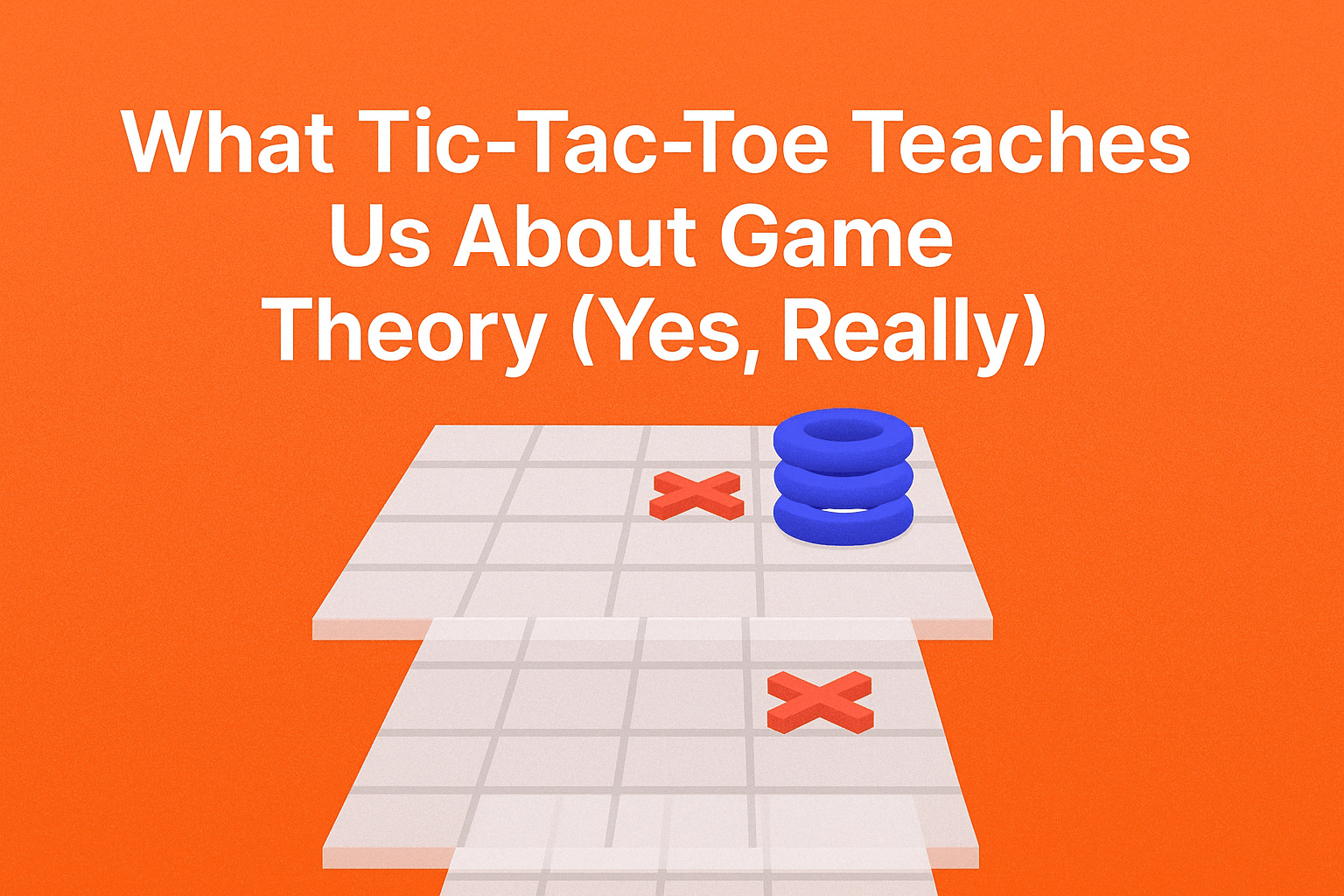You might think of tic tac toe as a kids’ game—something to pass the time with a pencil and paper. But underneath the grid lies something much deeper: a gateway to game theory.
From basic strategy to artificial intelligence, tic tac toe (and especially 3D tic tac toe) is a surprisingly powerful tool for exploring how games work, how people think, and how choices create outcomes.
Let’s dive into why this simple game is secretly a brainy classic.
📚 What Is Game Theory?
Game theory is the study of strategic decision-making—how players choose their moves when outcomes depend on the choices of others.
It’s used in everything from economics and politics to biology, chess, and of course… games!
Game theory helps us answer questions like:
- What’s the best way to play when you don’t know your opponent’s next move?
- How can you make a move that creates the most possible good outcomes?
- What happens when everyone plays “perfectly”?
Now let’s see how tic tac toe fits into all this.
❌ Tic Tac Toe as a “Solved Game”
Classic 3×3 tic tac toe is what’s known as a solved game—meaning we know exactly how to play it perfectly.
If both players use optimal strategy, the result will always be a draw.
Why? Because:
- There are only 362,880 possible board combinations
- A computer (or clever human) can calculate every possible outcome
- The ideal play is always the same: take the centre, block threats, force draws
This is why games between experienced players always feel repetitive.
But 3D Tic Tac Toe? That’s another story.
🔺 Why 3D Tic Tac Toe Breaks the Pattern
In 3D, the game becomes dramatically more complex:
- The board has 64 spaces instead of 9
- There are 76 possible winning lines, not 8
- The game tree (all possible move sequences) is too massive to “solve” easily
So while mathematicians know that the first player has a winning strategy, it’s so complicated that most people can’t memorise it. That means real matches are full of surprises, mistakes, and opportunities.
This makes 3D Tic Tac Toe a brilliant learning ground for:
- Applied game theory
- Anticipating opponent decisions
- Balancing offence and defence
- Visualising long-term consequences
🧠 First-Move Advantage
In both 2D and 3D versions, going first gives you a real edge. Why?
Because the first player gets to:
- Control key spaces early (like the centre)
- Set the pace of the game
- Force the second player into a defensive mindset
In game theory, this is part of a concept called initiative—the idea that the first move limits your opponent’s best options.
💡 Educator tip: Try switching who goes first every round, or giving the second player a slight advantage (like two moves to start) to even the odds.
🤖 The AI Connection
Tic tac toe has a special place in the history of artificial intelligence. It was one of the first games ever programmed into a computer!
- In 1952, British scientist Christopher Strachey built a tic tac toe AI that ran on the Ferranti Mark 1—the world’s first commercial computer.
- This experiment showed how machines could simulate decision-making—a huge leap in early AI.
Today, our own AI, Hermiobot, continues the tradition:
- It uses basic algorithms like minimax, which test every possible future move
- It balances attack and defence just like a human
- It plays fast—and gets better the more you play
🎓 Why Educators Love It
Tic tac toe isn’t just fun—it’s a powerful teaching tool for:
- Logical thinking
- Decision trees
- Probability and outcomes
- Turn-based systems
- Pattern recognition
And 3D Tic Tac Toe takes it further. It’s still easy enough for students to understand, but rich enough to spark deep discussions and meaningful strategy.
🏁 Final Thought: Small Game, Big Lessons
Tic tac toe might look like a simple game on the surface. But when you think in terms of game theory, it becomes a masterclass in strategy.
And with the 3D version, you’re not just playing a game—you’re exploring decisions, outcomes, and mental models in a fun, visual, competitive space.
So go ahead—play a few rounds. See what you learn. You’ll be surprised how much thinking goes into getting four in a row.
